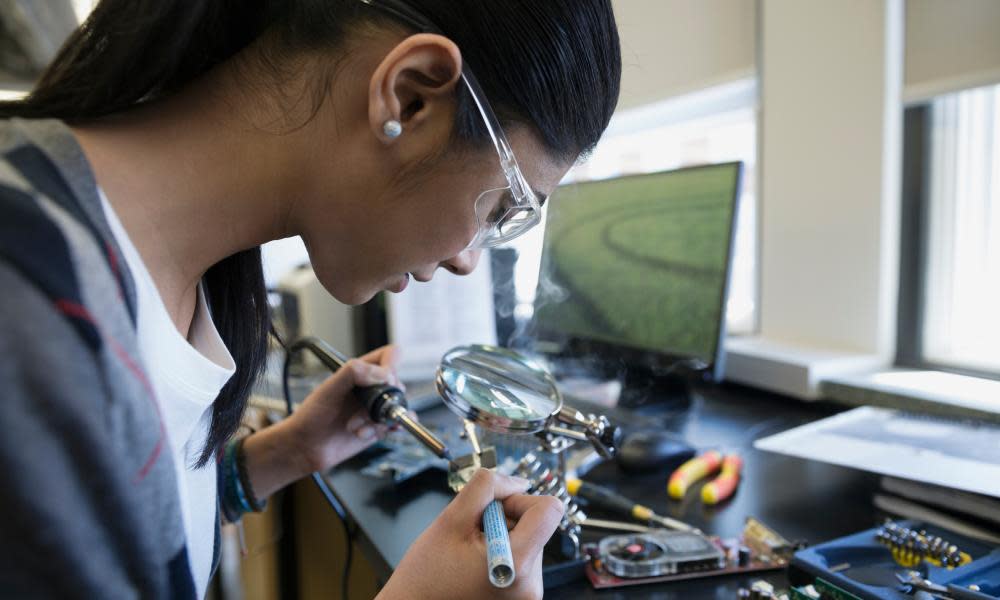Can they fix it? UK project to explore ability and desire to repair tech

From fancy toys to smartphones, when technology breaks, it often seems simplest to ditch it for a new model.
But now experts are hoping to challenge the status quo, launching a citizen science project to explore attitudes to repair, and pinpoint parts of the UK where the mending mindset is thriving.
The Big Repair Project comes in the wake of campaigns to reduce the vast quantities of electrical and electronic waste produced each year, as well as the environmental impact of new products, by ensuring that consumers can fix broken or damaged products – a rarity in the consumer world.
“It got to the point where most products ended up being put on to the market with no real viable route to repair,” said Prof Mark Miodownik of University College London, and who is leading the project.
Last year new laws were passed in the UK around the “right to repair”, meaning spare parts must now be made available for a number of household items including washing machines and TVs, and stay available for up to 10 years, depending on the part.
Meanwhile companies including Microsoft and Apple have recently announced their own moves to allow consumers to repair their own tech.
“It’s clear that the writing’s on the wall that actually from an environmental perspective, and from a market perspective, this is the direction of travel,” said Miodownik.
But there has been pushback.
At a recent roundtable event, hosted by the Royal Academy of Engineering and chaired by Miodownik some manufacturers argued that people could be injured attempting repairs, that the approach may make it harder to protect intellectual property, and that storing spare parts without trying to sell them is not necessarily in a company’s interests.
Some manufacturers also said they were waiting for customer demand to produce products with a lower environmental impact.
Laura Selten, of the appliance manufacturer Beko, said keeping products in use by increasing their longevity and repairability was one of the key ways to minimise products’ carbon footprint, adding that increasing the use of universal spare parts was one area the industry could work on.
But, she added, one issue was that the cost of new appliances was now closer to that of repairing old ones.
“Also at the point of purchase consumers tend to pay more attention to the price, functionality and aesthetics of the appliances rather than being concerned with the repairability of the appliances,” she said.
The citizen science project, said Miodownik, was in part a bid to explore whether the public really cared about being able to repair products.
As part of the Big Repair Project, participants will be asked to complete a survey about different appliances, gadgets and tech, including how important it is to be able to repair them and how long they would typically expect such items to last.
Related: Meet Mr Trash Wheel – and the other new devices that eat river plastic
The team will also collect partial postcode data to gather information on when items break, such as whether they are repaired and how much the process cost, allowing researchers to gather granular data on whether there are “repair hotspots” around the country.
“It is of interest to us, with the levelling-up agenda, to know whether there’s a repair economy that’s thriving in a certain locale,” said Miodownik.
“It is important to emphasise that we are just as interested in the stuff people can’t repair because it is too expensive to do so, and whether this makes them frustrated,” he said.
The data could also provide the opportunity to test ideas around the impact of the approach.
“We’ve got this hypothesis that actually repair isn’t just an economic good, an environmental good, but also social good,” said Miodownik.

 Yahoo Movies
Yahoo Movies 
